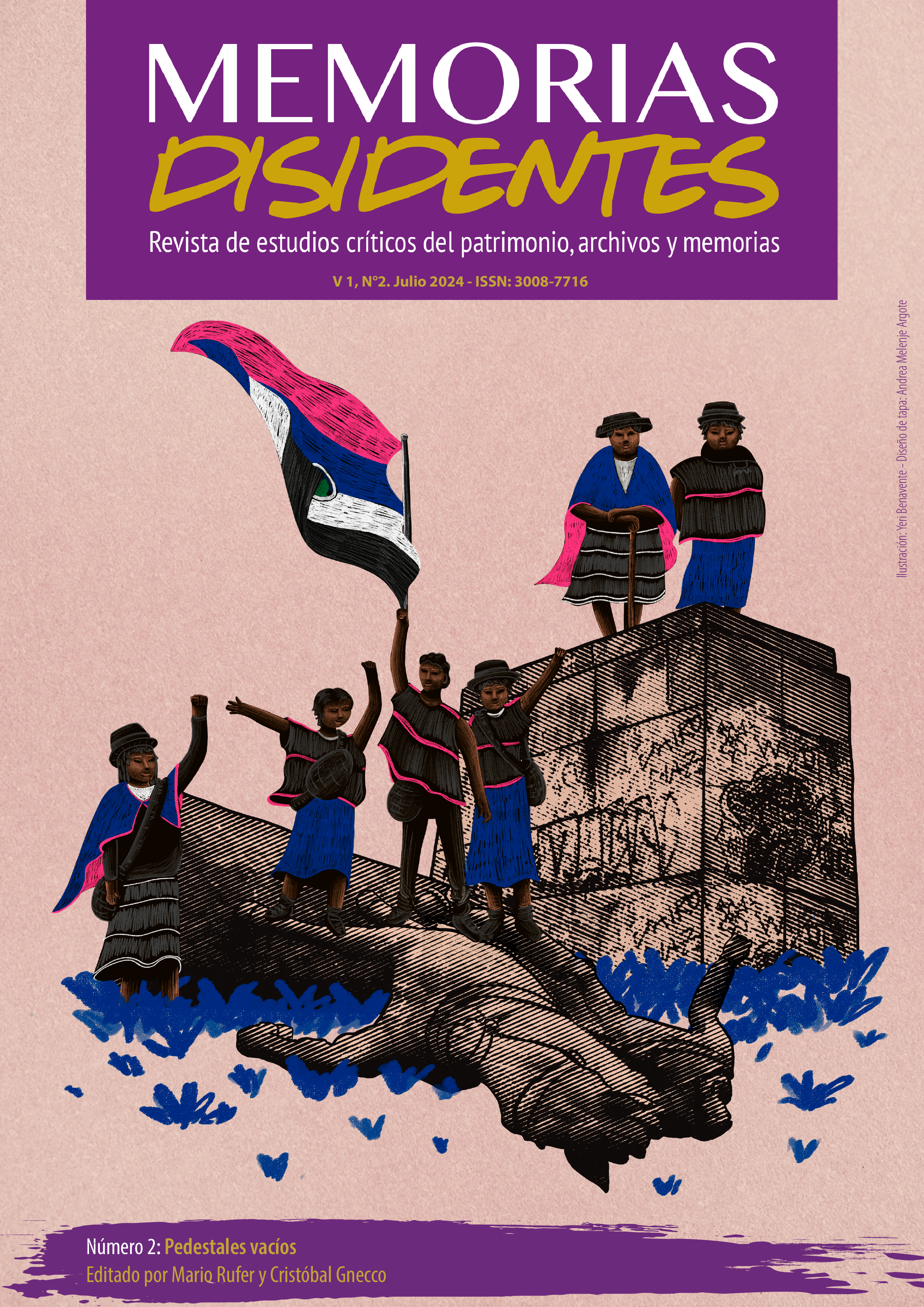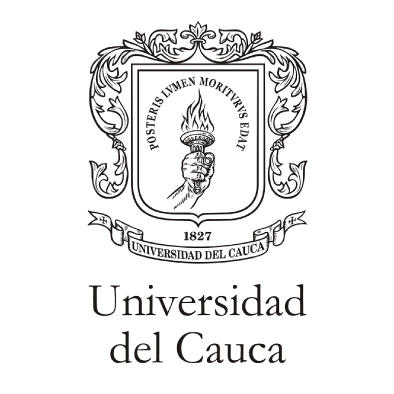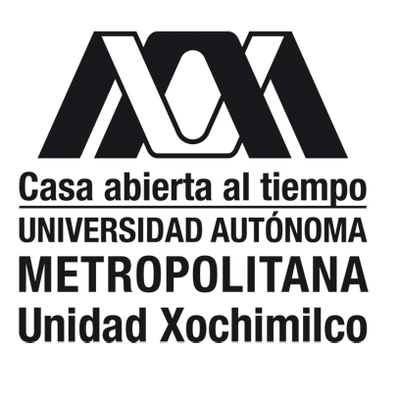Glorieta of women who fight: a space of resignification
Video-creación en juntanza
Keywords:
Glorieta, fighting women, space of resignificationAbstract
This is an Interactive Space, made up of a compilation of the work of the photojournalist Andrea Murcia and photographs of the Doctor in Estudios de Género Emanuela Borzacchiello, where you can listen to narrations, appreciate different points of view of different women and observe images about the resignification of the Glorieta de las Mujeres que Luchan located on the Paseo de la Reforma, before the Monument to Colon in the City of Mexico.
References
Alabarces, Pablo. (2020). Pospopulares. Las culturas populares después de la hibridación. CALAS. http://www.calas.lat/es/publicaciones/afrontar-las-crisis/pablo-alabarces-pospopulares-las-culturas-populares-despu%C3%A9s-de-la
Añón, Valeria y Rufer, Mario (2018). Lo colonial como silencio, la conquista como tabú: reflexiones en tiempo presente. Tabula Rasa, 29, 107-131. https://doi.org/10.25058/20112742.n29.06
Aristegui Noticias (5 de marzo 2022). Feministas cumplen jornada colectiva en monumento en CdMx. Aristegui Noticias. https://aristeguinoticias.com/0503/mexico/feministas-cum-plen-jornada-colectiva-en-monumento-en-cdmx-videos/
Austin, John. L. (1993). Conferencia 1. Cómo hacer cosas con palabras: palabras y acciones. Paidós.
Bidaseca, Karina (2012). Perturbando el texto colonial. Los estudios poscoloniales en Latino-américa. SB.
Butler, Judith (2013). Acerca del termino queer. En: Cuerpos que importan. Sobre los límites materiales y discursivos del sexo (pp. 317, 319, 321, 325). Crítica.
Eagleton, Terry (1997). ¿Qué es la ideología? En Ideología. Una introducción (pp. 43-51). Paidós.
Expansión Política (7 de marzo 2024). Glorieta de las Mujeres que Luchan en CDMX: ¿cuál es su historia y cómo llegar? https://politica.expansion.mx/cdmx/2024/03/07/glorieta-de-las-mujeres-que-luchan-cdmx
Foucault, Michel (1988). El sujeto y el poder. Revista mexicana de sociología. 50 (3), 3-20.
Foucault, Michel. (1999). El orden del discurso. La piqueta.
Hall, Stuart (2010). El trabajo de la representación. En Eduardo Restrepo et al. Sin garantías. Problemáticas y trayectorias e Estudios Culturales, (pp. 447-482) Universidad Simón Bolivar.
Igualdad de Género UNAM (30 de noviembre 2022). Glorieta de las mujeres que luchan. [Archivo de Vídeo]. Youtube. https://www.youtube.com/watch?v=lQOk79i1Cf4
Marques Murrieta, Alicia (22 de julio 2023). Colón, la Antimonumenta y La Joven de Amajac: la disputa por lo simbólico. La Cadera De Eva. https://lacaderadeeva.com/voces/colon-la-antimonumenta-y-la-joven-de-amajac-la-disputa-por-lo-simbolico/7961
Rozental, Sandra (20 de octubre 2021). La joven de Amajac: ¿“la mujer indígena” que nos dio patria? Revista Común. https://revistacomun.com/blog/la-joven-de-amajac-la-mujer-indigena-que-nos-dio-patria/
Rufer, Mario (noviembre-diciembre 2021). Deponer a Colón, renombrar octubre. Un vacío necesario entre las palabras y las cosas. Casa del Tiempo https://casadeltiempo.uam.mx/index.php/15-ct71/175-ct-71-deponer-a-colon-renombrar-octubre-un-vacio-necesario-entre-las-palabras-y-las-cosas-mario-rufer
Segato, Rita (2017). La guerra contra las mujeres. Traficantes de sueños.
Vignolo, Paolo (2021). ¿Sueñan las estatuas con ovejas de bronce? Corpus, Vol. 11, No. 1. https://doi.org/10.4000/corpusarchivos.4520
Viveros Vigoya, Mara (2021). La interseccionalidad: una aproximación situada a la dominación. Debate Feminista 52, 1-17. https://repositorio.unal.edu.co/handle/unal/80372
Vizcaíno Torres, Alicia de María (2023). Vista de Luchas antipatriarcales en México, lo estético-político como elemento constitutivo. Política y Cultura, 60, 183-204. http://doi.org/10.24275/FDMH8353
Referencias fotográficas
Instagram. Usuario: Andrea Murcia [@usagii_ko], URL: https://www.instagram.com/usa-gii_ko?utm_source=ig_web_button_share_sheet&igsh=ZDNlZDc0MzIxNw==
Borzacchiello, Emanuela (abril 2023). Ciudad de México

Published
How to Cite
Issue
Section
License

-
The authors retain the rights of autxr and assign to the journal the right to first publication of the work, registered under the Creative Commons attribution license, which allows third parties to use what is published as long as they mention the authorship of the work and the first publication in this journal.
-
Authors may make other independent and additional contractual agreements for the non-exclusive distribution of the version of the article published in this journal (for example, including it in an institutional repository) as long as they clearly indicate that the work was first published in this journal.
-
The authors grant any third party the right to share and use the article (for non-commercial purposes), provided that the original authors and the citation of the version published in this journal are identified.





